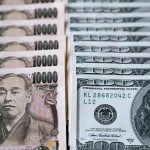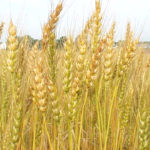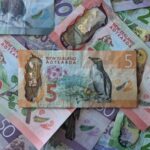Gold touched the highest in almost five months on safe-haven bids days before the probable launch of the European Central Bank’s quantitative easing program. Silver, platinum and palladium also rose. Copper slid as Chinas economy expanded in 2014 at the slowest pace in 24 years.
Comex gold for delivery in February was up 1.19% at $1 292.1 per troy ounce at 10:46 GMT, having earlier risen to $1 294.3, the highest since August 28th. The precious metal settled at $1 276.9 on Friday, while floor trading on Monday was suspended due to the Martin Luther King Jr. holiday.
Investors will be observing the ECB’s policy meeting, which is scheduled to be held on January 22nd, looking for clues whether or not the bank will announce a bond-buying program in order to boost inflation in the region.
“The market will be watching the ECB meeting on Thursday for any quantitative easing announcement and if announced we should see moderate demand for the yellow metal,” said MKS Group trader Sam Laughlin, cited by CNBC.
Traders are also concerned about the volatility in the European markets caused by speculations that Greece may be the first country to exit the euro zone. The Syriza party, which has promised to remove Berlin-imposed austerity policies and lead the country out of the 19-member group, has a lead over its rivals and is poised to win at the elections scheduled on January 25.
Assets in the SPDR Gold Trust, the biggest bullion-backed ETF, marked their biggest daily increase since May 2010 and climbed 13.74 tons on Friday to 730.89 tons. Changes in holdings typically move gold prices in the same direction.
Meanwhile, the International Monetary Fund followed the World Bank into slashing its global growth outlook for this year and the next, saying that most major economies, apart from the US and Spain, will experience a slowdown in expansion. The global economy will grow by 3.5% this year, compared to earlier estimates for 3.8% in October, while the 2016 outlook was revised down to 3.7% from 4.0%.
The IMF also asked governments to maintain accommodative monetary policies and refrain from lifting real interest rates due to the risk of deflation caused by plunging oil prices.
The US dollar index for settlement in March was down 0.02% at 92.870 at 10:46 GMT, holding in a daily range of 93.165-92.840. A stronger greenback makes dollar-denominated commodities more expensive for holders of foreign currencies and curbs their appeal as an alternative investment, and vice versa.
Copper
Copper pared earlier gains as Chinas economy cooled in the fourth quarter, albeit less than expected, but losses were capped by better-than-expected industrial production and retail sales data.
Comex copper for delivery in March was down 0.90% at $2.5935 per pound at 10:46 GMT, having shifted between $2.6360 and $2.5550. The metal rose 2.31% on Friday to $2.6170.
China’s National Bureau of Statistics reported on Tuesday that the world’s second-largest economy expanded by an annualized 7.3% in the fourth-quarter, exceeding broad expectations for 7.2%. However, full-year growth eased to 7.4% in 2014, the lowest since 1990, falling short of the government’s targeted 7.5%.
However, industrial production expanded by a better-than-expected 7.9% in December from a year earlier, beating projections for a jump to 7.4% from 7.2% in November. Retail sales also came in above projections, growing by an annualized 11.9% compared to 11.7% a month earlier.
Daniel Hynes, an analyst at ANZ in Sydney, said for CNBC: “The industrial output number was quite strong. Im hopeful that it will maybe take the focus off the supply-side of the equation which has obviously been a bearish focus for the market.”
Prices have also been drawing support after China’s State Grid Corp. said it will boost investment by 24% to 420.2 billion yuan ($68 billion), following a 14% increase last year. This would increase copper consumption in the power sector by 8.7% to 4.62 million tons, state-backed research company Antaike said. The power sector accounted for almost 50% of China’s 8.7-million-ton consumption of refined copper last year. China is the world’s biggest producer and consumer of the red metal.
Also on the positive side, economic sentiment in the Eurozone and its leading economy improved in January, while an alleged announcement of a quantitative easing program by the ECB later in the week might boost risk appetite. The German ZEW Economic Sentiment index rose to 48.4 in January from 34.9 in December, topping forecasts for 40.0, while the Current Conditions index rose to 22.4 from 10.0 last month. The Eurozone as a whole saw sentiment pick up as well, with the corresponding index hitting 45.2 from 31.8 in December.





